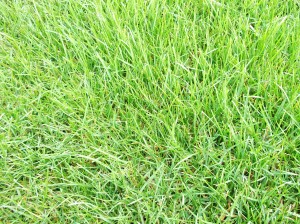 Have you ever had problems growing grass? This can be quite frustrating, even a headache. There are many possibilities to why this is. We will discuss some of the common problems when trying to grow grass.
Have you ever had problems growing grass? This can be quite frustrating, even a headache. There are many possibilities to why this is. We will discuss some of the common problems when trying to grow grass.
- You have not waited enough time for the grass to grow. Newly planted grass under perfect conditions takes up to a week before you will start to see anything come up, and some varieties can take up to two weeks to start to grow, like Kentucky Bluegrass. The solution to this problem is just wait.
- Pre-emergent herbicide, like crabgrass control products, can stop new grass seed from growing. Pre-emergent herbicide stops not only the crabgrass plants from growing, they stop many types of plants from growing, including grass seed without harming established grass plants. When crabgrass control has been applied to a yard, it is best to wait until the crabgrass control runs its course. By mid-August, the crabgrass control will no longer be active, and planting grass seed will be possible. crabgrass control is a big factor into why grass seed does not do well in the spring on fertilized lawns.
- It may be too hot or too cold for the grass to grow. Cool-season grasses, which we have here in Michigan, need the temperatures to be within a specific range for the plants to be actively growing. The roots need temperatures between 55°F and 65°F, and the grass blades need temperatures between 65°F and 75°F. When the temperatures are above or below this range, the grass plant is not actively growing. This is why it is best to grow grass in the spring or the late summer, and why even established turf does not grow that fast in the heat of the summer.
- Damage from foot traffic or any wear and tear on the newly planted grass can limit new growth. This causes the tender new grass plants to be uprooted. The best way to avoid this problem is to keep off newly seeded areas.
- The soil conditions may be wrong for seed to start to grow. If the soil conditions are not right, too high or low in nutrients or too high or low of a pH, the grass plant will not be able to grow. A soil test can help to determine the condition of the soil, and if any amendments need to be added so that the grass can grow.
- Bad seed or the wrong type of seed can limit the establishment of a new turf stand. Buying the cheapest seed may result in a thin turf stand. The seed may not have a high germinating percentage, which means that only a portion of the grass seed is able to grow. Also, seed with a large percentage of crop or weed seed can inhibit grasses ability to establish properly. Certain grass varieties do better in certain conditions. Some grass seed mixes are designed for shaded area, some for sunny areas, others for high traffic areas. Choosing the right seed from the start can help avoid this problem. If this is the case though, you may have to replant to have a healthy turf stand.
- Too much or too little water can affect how well grass seed grows. If grass seed does not get enough water, it cannot get started. If grass seed receives too much water, it will drown the plants or wash it away. Typically, it is best to moisten grass seed and newly emerged grass plants three times a day. This can be down through rainfall or lawn sprinkling. But don’t forget to continue watering newly emerged grass. Just because it has started, it is very tender and very vulnerable to drying out, so continue the light water multiple times a day until it is established.
- Too much competition can limit the growth of grass seed. Trees, weeds, or debris on the lawn can all slow grass seed growth. The grass seed needs room to grow. The best option is to control weeds before planting grass seed, or remove the debris, or thin out the trees. If the grass seed is already planted, try not to disturb it too much as that can be the same as damage from traffic.
All of these can cause problems growing grass seed. There are many factors to growing grass, and it may be a mix of more than one what stops the grass seed. The best is to look at every possibility when it comes to growing grass so that it has the best chance to grow and become an established turf stand.
Help….the feed company sold us Mountain Meadow instead of Mountain Beauty…we now have pasture grass growing in our yard…what is the proper procedure to remove these seedlings and replant the new seed…they told us that we have to let the grass come in fully, then Roundup it, and wait 10 days to re-seed…is this correct? I don’t trust them now. Thank you…
I would wait 14 days instead of the 10 that was recommended; I think that is a better duration to wait to reseed with desirable grass. Other than the number of days, I agree on the procedure, killing the grass off and starting again is going to be the best option from this point forward.